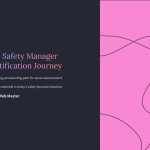 Fire safety management is a crucial responsibility in ensuring the safety of buildings, facilities, and their occupants. However, even experienced professionals can make mistakes in this field. Recognizing and understanding these common mistakes can help prevent costly and dangerous consequences. In this article, we’ll explore some of the most frequent errors made in fire safety management and provide practical tips for avoiding them.
Fire safety management is a crucial responsibility in ensuring the safety of buildings, facilities, and their occupants. However, even experienced professionals can make mistakes in this field. Recognizing and understanding these common mistakes can help prevent costly and dangerous consequences. In this article, we’ll explore some of the most frequent errors made in fire safety management and provide practical tips for avoiding them.

Lack of Regular Fire Safety Drills and Training
One of the most common mistakes in fire safety management is neglecting regular fire safety drills and training for employees and occupants. Many companies conduct initial training during onboarding but fail to maintain ongoing education on fire safety procedures.
Why This Is a Mistake
In the event of a fire, the speed and effectiveness with which everyone can evacuate the building depend on how well they know the procedures. If employees or residents aren’t regularly reminded of emergency exits, alarm systems, and safe zones, panic can set in, which could result in tragic outcomes.
How to Prevent This Mistake
To prevent this, make fire drills a routine part of workplace safety. Schedule them at least once or twice a year, ensuring that everyone knows their role in the event of a fire. Additionally, review fire safety procedures periodically, including escape routes, fire extinguisher locations, and emergency contact information.

Failure to Maintain Fire Safety Equipment
Fire safety equipment such as fire extinguishers, smoke detectors, and sprinkler systems are essential to keeping a building safe. However, some managers fail to maintain and check these systems regularly.
Why This Is a Mistake
Faulty or outdated fire safety equipment can render your fire safety plans useless. If, for example, fire extinguishers are not checked for pressure or smoke detectors are not tested for functionality, they may fail when needed most.
How to Prevent This Mistake
Create a strict maintenance schedule for all fire safety equipment and ensure it is checked at regular intervals. Keep detailed records of inspections and replacements. Use certified professionals to inspect and maintain critical systems like sprinklers and alarms.

Ignoring Fire Code Updates and Regulations
Fire safety regulations and codes evolve over time to adapt to new technologies and to respond to lessons learned from past incidents. A common mistake in fire safety management is ignoring or overlooking these updates.
Why This Is a Mistake
Failure to comply with updated fire codes can result in non-compliance penalties and, more importantly, increased risks of fire hazards. Additionally, outdated systems may not be as effective in preventing or mitigating fires as the latest technologies.
How to Prevent This Mistake
Stay up to date with local and national fire safety regulations. Regularly review and update your fire safety plans to incorporate any new legal requirements. Subscribe to fire safety newsletters or attend training sessions to remain informed about the latest fire safety technologies and protocols.

Inadequate Fire Risk Assessment
Many fire safety managers fail to conduct thorough and regular fire risk assessments, which are critical in identifying hazards and implementing corrective measures.
Why This Is a Mistake
A fire risk assessment helps identify potential risks in a building or facility, such as overloaded electrical circuits, blocked fire exits, or improperly stored flammable materials. Without a proper assessment, these hazards may go unnoticed until it’s too late.
How to Prevent This Mistake
Conduct comprehensive fire risk assessments on a regular basis. Ensure that all potential fire hazards are identified, and implement corrective actions to mitigate them. This includes ensuring proper storage of hazardous materials, checking electrical systems, and keeping emergency exits clear at all times.

Underestimating the Importance of Fire Prevention
Some fire safety managers focus too much on reactive measures like fire extinguishers and alarms, while neglecting proactive fire prevention strategies.
Why This Is a Mistake
Fire prevention is the best way to reduce the risk of a fire in the first place. By neglecting prevention strategies, you increase the likelihood of fire-related incidents. Prevention measures could include controlling sources of ignition, proper waste disposal, and using fire-resistant building materials.
How to Prevent This Mistake
Ensure that fire prevention strategies are a top priority. Implement systems to monitor and control ignition sources, maintain safe waste disposal practices, and use fire-resistant materials during construction or renovation. Regularly inspect the building for potential fire risks and address them immediately.

Poor Documentation of Fire Safety Procedures
Documentation is an essential part of fire safety management, but many fire safety managers neglect to keep thorough records of safety measures, inspections, and drills.
Why This Is a Mistake
Without proper documentation, it’s difficult to prove that safety procedures have been followed or that the building complies with fire safety regulations. In the event of a fire, well-documented procedures can serve as evidence that safety protocols were in place, which can help in legal proceedings.
How to Prevent This Mistake
Keep detailed records of all fire safety activities, including inspections, drills, maintenance, and training sessions. Ensure that these documents are accessible and regularly updated. Having this documentation can also help identify patterns or areas for improvement in fire safety protocols.
6imz_ Failing to Ensure Proper Communication During a Fire Emergency
Effective communication during a fire emergency is vital, but many fire safety managers overlook the importance of a clear communication plan.
Why This Is a Mistake
In a fire emergency, poor communication can cause confusion, delays in evacuation, and even panic. If emergency protocols aren’t clearly communicated or understood, lives may be lost or injuries increased.
How to Prevent This Mistake
Establish a clear communication plan for all staff members and occupants of the building. This includes ensuring that emergency alarms are loud and distinctive, that everyone knows how to communicate with emergency services, and that everyone is aware of evacuation procedures. Communication tools such as two-way radios or mass notification systems should be tested regularly.
Conclusion
Fire safety management is a complex and multifaceted responsibility that requires diligence, proactive measures, and continuous education. By avoiding these common mistakes, fire safety professionals can significantly reduce the risk of fire-related incidents and ensure the safety of everyone in the building. Regular training, updated safety equipment, thorough risk assessments, and effective communication are all essential components of a successful fire safety strategy.
Q&A
Q: How often should fire drills be conducted?
A: Fire drills should be conducted at least once or twice a year, but some facilities, especially high-risk ones, may require more frequent drills.
Q: What should be included in a fire risk assessment?
A: A fire risk assessment should cover potential hazards like ignition sources, blocked exits, unsafe storage of flammable materials, and faulty electrical systems.
Q: How can fire safety managers stay up to date with regulations?
A: Fire safety managers should subscribe to industry newsletters, attend seminars, and consult with local fire authorities to stay informed about the latest regulations.
Conclusion
By understanding and addressing these common mistakes in fire safety management, you can greatly improve your building’s safety and reduce the likelihood of accidents. Implementing regular training, maintaining equipment, and keeping up with fire codes are essential steps in ensuring the well-being of all occupa
*Capturing unauthorized images is prohibited*






